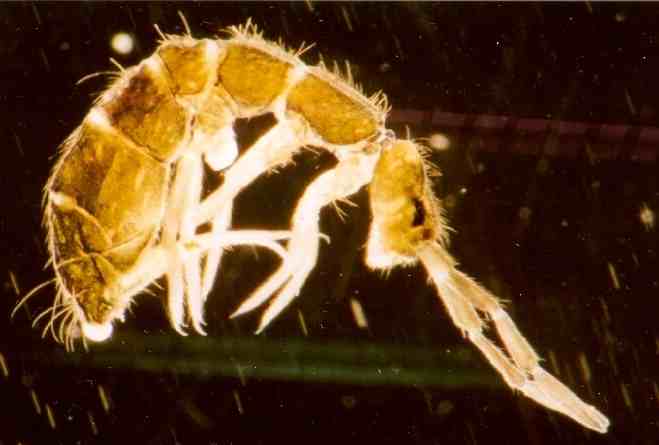|
Aackia
''Aackia'' is a genus of springtails in the family Isotomidae. It is a monotypic genus In biology, a monotypic taxon is a taxonomic group (taxon) that contains only one immediately subordinate taxon. A monotypic species is one that does not include subspecies or smaller, infraspecific taxa. In the case of genera, the term "unispe ... made up of a single species, ''Aackia karakoramensis''. Both genus and species were described in 1966. References Springtail genera Monotypic arthropod genera {{springtail-stub ... [...More Info...] [...Related Items...] OR: [Wikipedia] [Google] [Baidu] |
Isotomidae
Isotomidae is a family of elongate-bodied springtails in the order Entomobryomorpha. Genera These 109 genera belong to the family Isotomidae: * '' Aackia'' Yosii, 1966 * '' Acanthomurus'' Womersley, 1934 * '' Aggressopygus'' Potapov & Babenko, 2014 * '' Agrenia'' Boerner, 1906 * '' Antarcticinella'' Salmon, 1965 * '' Antarctophorus'' Potapov, 1992 * '' Anurophorus'' Nicolet, 1842 * '' Appendisotoma'' Stach, 1947 * '' Araucanocyrtus'' Massoud & Rapoport, 1968 * '' Archisotoma'' Linnaniemi, 1912 * '' Arlea'' Womersley, 1939 * '' Axelsonia'' Boener, 1906 * '' Ballistura'' Börner, 1906 * '' Biacantha'' Martynova, 1971 * '' Blissia'' Rusek, 1985 * '' Bonetrura'' Christiansen and Bellinger, 1980 * '' Burmisotoma'' Christiansen & Nascimbene, 2006 * '' Coloburella'' Latzel, 1918 * '' Cryptopygus'' Willem, 1901 * '' Cylindropygus'' Deharveng, Potapov & Bedos, 2005 * '' Dagamaea'' Yosii, 1965 * '' Degamaea'' Yosii, 1965 * '' Desoria'' Agassiz & Nicolet, 1841 * '' Dimorphacanthella'' Potap ... [...More Info...] [...Related Items...] OR: [Wikipedia] [Google] [Baidu] |
Springtail
Springtails (Collembola) form the largest of the three lineages of modern hexapods that are no longer considered insects (the other two are the Protura and Diplura). Although the three orders are sometimes grouped together in a class called Entognatha because they have internal mouthparts, they do not appear to be any more closely related to one another than they are to all insects, which have external mouthparts. Collembolans are omnivorous, free-living organisms that prefer moist conditions. They do not directly engage in the decomposition of organic matter, but contribute to it indirectly through the fragmentation of organic matter and the control of soil microbial communities. The word ''Collembola'' is from the ancient Greek "glue" and "peg"; this name was given due to the existence of the collophore, which was previously thought to stick to surfaces to stabilize the creature. Some DNA sequence studies suggest that Collembola represent a separate evolutionary line ... [...More Info...] [...Related Items...] OR: [Wikipedia] [Google] [Baidu] |
Monotypic Taxon
In biology, a monotypic taxon is a taxonomic group (taxon) that contains only one immediately subordinate taxon. A monotypic species is one that does not include subspecies or smaller, infraspecific taxa. In the case of genera, the term "unispecific" or "monospecific" is sometimes preferred. In botanical nomenclature, a monotypic genus is a genus in the special case where a genus and a single species are simultaneously described. In contrast, an oligotypic taxon contains more than one but only a very few subordinate taxa. Examples Just as the term ''monotypic'' is used to describe a taxon including only one subdivision, the contained taxon can also be referred to as monotypic within the higher-level taxon, e.g. a genus monotypic within a family. Some examples of monotypic groups are: Plants * In the order Amborellales, there is only one family, Amborellaceae and there is only one genus, '' Amborella'', and in this genus there is only one species, namely ''Amborella trichopoda.' ... [...More Info...] [...Related Items...] OR: [Wikipedia] [Google] [Baidu] |
Springtail Genera
Springtails (Collembola) form the largest of the three lineages of modern hexapods that are no longer considered insects (the other two are the Protura and Diplura). Although the three orders are sometimes grouped together in a class called Entognatha because they have internal mouthparts, they do not appear to be any more closely related to one another than they are to all insects, which have external mouthparts. Collembolans are omnivorous, free-living organisms that prefer moist conditions. They do not directly engage in the decomposition of organic matter, but contribute to it indirectly through the fragmentation of organic matter and the control of soil microbial communities. The word ''Collembola'' is from the ancient Greek "glue" and "peg"; this name was given due to the existence of the collophore, which was previously thought to stick to surfaces to stabilize the creature. Some DNA sequence studies suggest that Collembola represent a separate evolutionary line fro ... [...More Info...] [...Related Items...] OR: [Wikipedia] [Google] [Baidu] |

.jpg)